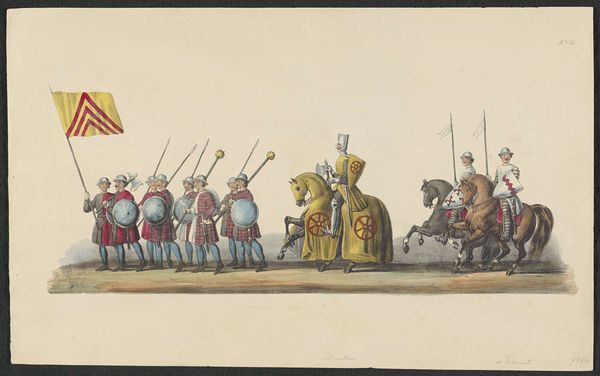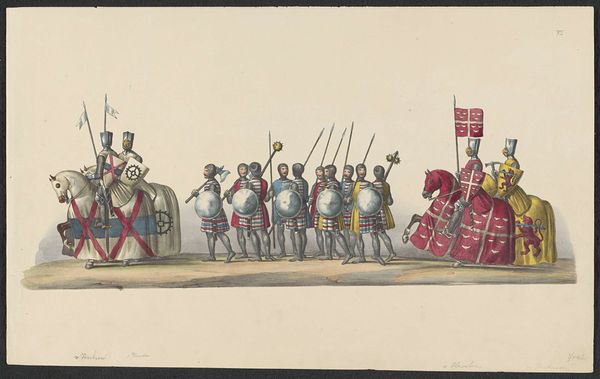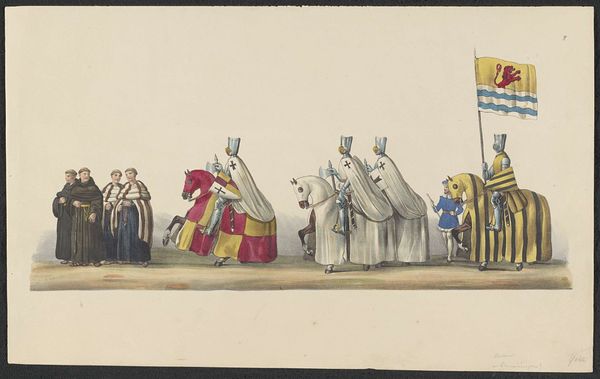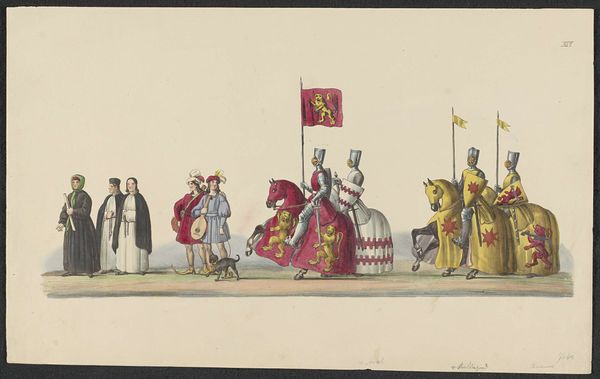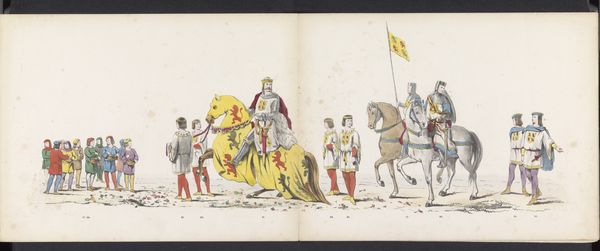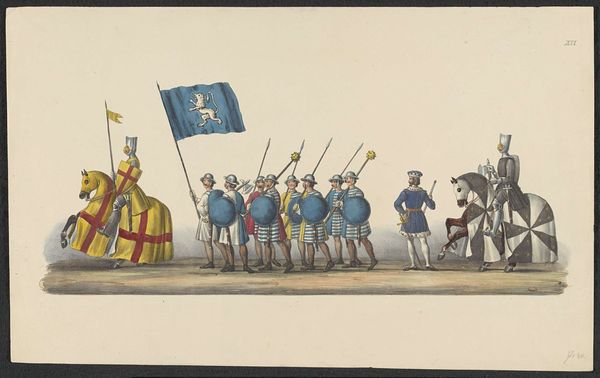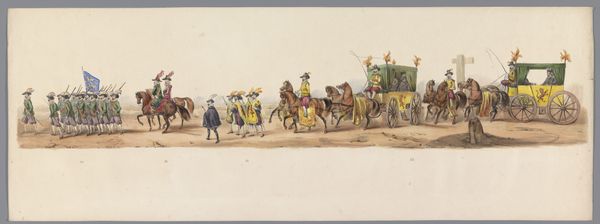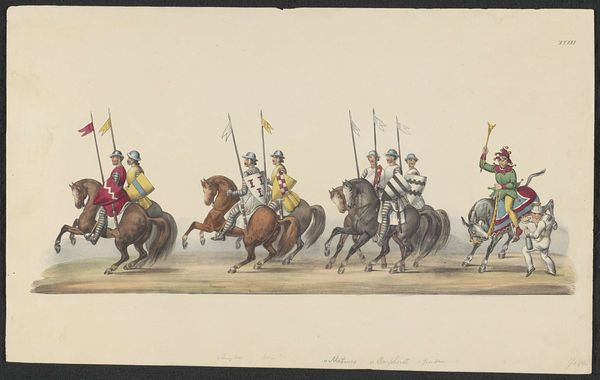
Gekostumeerde optocht van 1841: graaf Willem II en ridders (blad XII) 1841
0:00
0:00
anonymous
Rijksmuseum
painting, watercolor, pencil
#
painting
#
watercolor
#
coloured pencil
#
romanticism
#
pencil
#
watercolour illustration
#
genre-painting
#
history-painting
#
academic-art
#
watercolor
Dimensions: height 300 mm, width 480 mm
Copyright: Rijks Museum: Open Domain
Curator: At first glance, I sense order, a serene procession of power... almost like actors frozen mid-play. Editor: We’re looking at an 1841 watercolour and pencil drawing housed in the Rijksmuseum, entitled "Gekostumeerde optocht van 1841: graaf Willem II en ridders (blad XII)". It depicts a costumed procession of Count William II and knights. It’s by an anonymous artist. Curator: The symmetry strikes me. Each horse wears similar livery. What symbols might we recognize on those pennants? Editor: The lions rampant seem a clear echo of medieval heraldry, of course. I wonder, are we looking back to connect to notions of idealized medieval power or legitimization? Curator: Yes, consider the use of yellow and red, historically signifying courage and royalty. These colors aren't merely aesthetic choices; they actively communicate power, an echo that reverberates down to us today through countless national flags. Editor: But is there some theatre to this, too? I am curious what kind of an event required a "costumed" procession. There's something almost theatrical in the arrangement. Everyone is turned toward the "audience", except, well, there *is* no audience except the painting's viewer. Curator: Precisely. We are invited to bear witness to power performing itself. Notice also the careful rendering of each figure. The unknown artist seems very interested in making sure each character's identity comes across and feels historically grounded. Editor: Almost as if trying to will some aspect of national pride to life. But, even beyond the obvious nods to power, what stories hide beneath these costumes? Is it a form of ancestor worship, filtered through 19th century lenses, dreaming of noble pasts? Or a lighthearted spectacle intended to evoke civic sentiment in the town or city where the pageant happened? I find myself dreaming up histories rather than researching historical precedent! Curator: Well said! By gazing upon these medieval costumes, and historic colours, perhaps they're saying, "Remember us". By preserving those collective memory markers within art. It invites that very dream of which you speak. Editor: Maybe such imaginings is why I gravitate to images like this. They stir up personal quests that take a hold of one’s imagination.
Comments
No comments
Be the first to comment and join the conversation on the ultimate creative platform.
